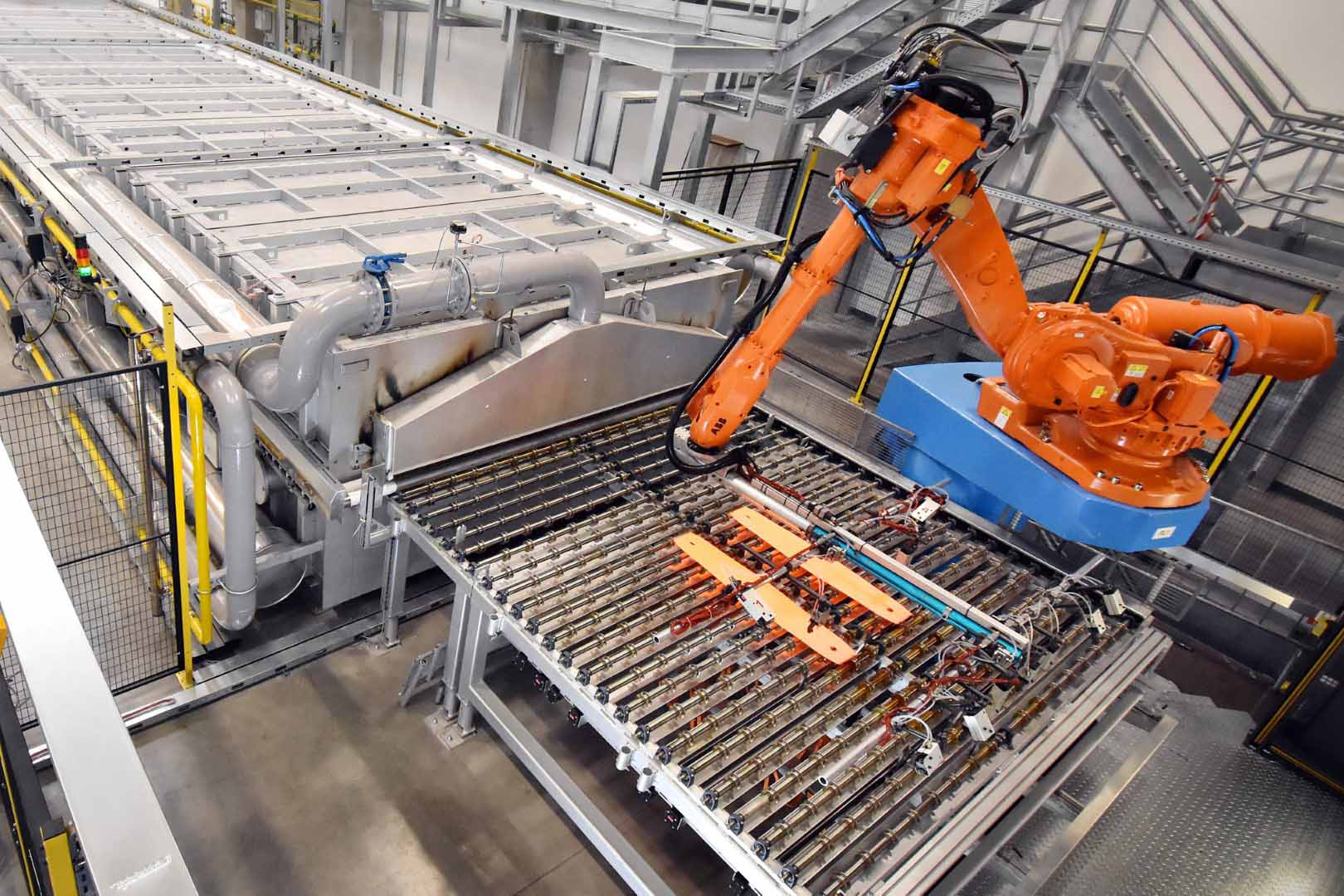Table of Contents: What Matters in Hot Stamping
- The Importance of Temperature in Hot Stamping: Quick Transfer Makes the Difference
- Tool Behavior: Heat Out, Stability In
- Precision is Key in Hot Stamping: Matching and Dwell Time
- Conclusion: Hot Stamping – A Fine-Tuned Balance of Heat and Precision
The Importance of Temperature in Hot Stamping: Quick Transfer Makes the Difference
In hot stamping, metal is heated to temperatures above 850°C and then shaped under high pressure. It sounds simple, but as always, the devil is in the details. A critical aspect is the transfer of the metal blank from the furnace to the press. Sounds trivial? Not at all. The transfer time must be precisely timed—ideally between 5 and 12 seconds. Every additional second means the material cools down and its structure changes.
If this cooling occurs too much, it can lead to local microstructural changes, causing the material to exhibit properties that are undesirable for the process. Premature martensite formation is a classic example: the blank becomes brittle, and the risk of cracking increases. Any mistake in transfer directly affects the material quality and the final shape of the component.
Tool Behavior: Heat Out, Stability In
Another crucial element in hot stamping is the cooling rate. This may seem contradictory—first heat, then cool—but that’s the trick: the components are cooled from around 850°C to 250°C or 180°C within seconds. This achieves the desired strength.
However, this extreme cooling poses a challenge for the hot stamping tools. The high temperature fluctuations cause thermal stresses in the tool steels, which they must withstand. To handle this, the stamping tools must be specially developed—they need high thermal shock resistance and must efficiently dissipate heat. This is where integrated cooling systems come into play. Without this technology, wear would be enormous, and process stability would be compromised.
Precision is Key in Hot Stamping: Matching and Exact Adjustment
Now comes the final, but no less important step—the exact alignment of the tool’s working surfaces, known as "matching." Only when the working surfaces are perfectly aligned can the component and the tool contours fit together precisely. The result? A part that looks exactly as it should, with no deviations in geometry or hardness.
Dwell Time: The Key to Perfect Shape and Hardness
Dwell time is crucial because it allows the component to achieve its final hardness and strength. Too short a dwell time means the part will not fully harden and will miss the desired final strength. Therefore, it’s essential to adjust the dwell time precisely to the material and the part thickness to achieve the perfect result. As always, timing is key here.
To ensure optimal heat transfer, pressure (press force) is also vital. At weba, for instance, we use a 1,600-ton hot stamping press, which, with its immense power, compresses the material optimally. This not only enables precise shaping but also ensures that the heat is evenly transferred from the component to the tool—even for very complex and large components like door rings.
Conclusion: Hot Stamping – A Fine-Tuned Balance of Heat and Precision
Hot stamping is much more than just “heating and pressing.” It’s about the perfect interplay of temperature, transfer time, cooling rate, and tool precision. Only when all these factors are perfectly aligned can high-strength, precise components be produced. Every detail counts to meet the demands of the modern automotive industry and to create parts that are both lightweight and safe.
So, the next time you think of complex metal parts—hot stamping may have made them exactly how they need to be: strong, precise, and beautifully shaped.
